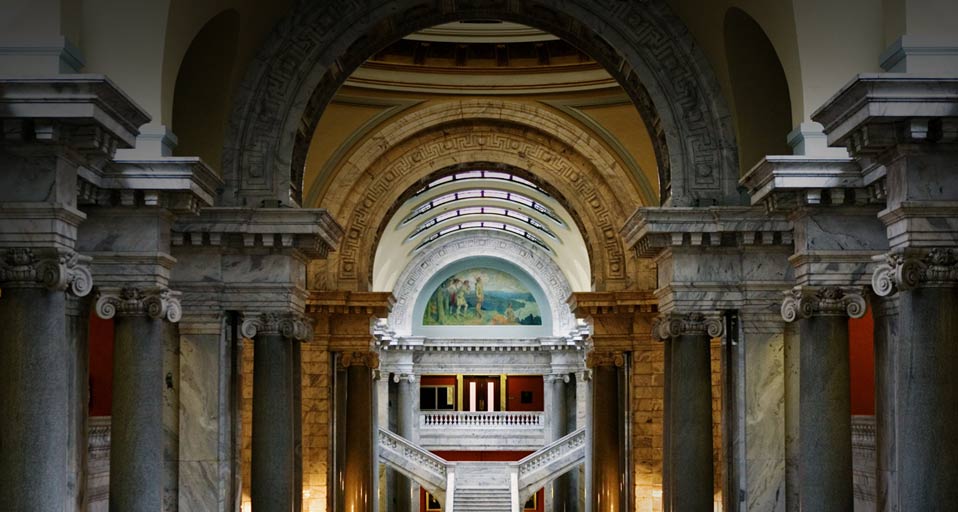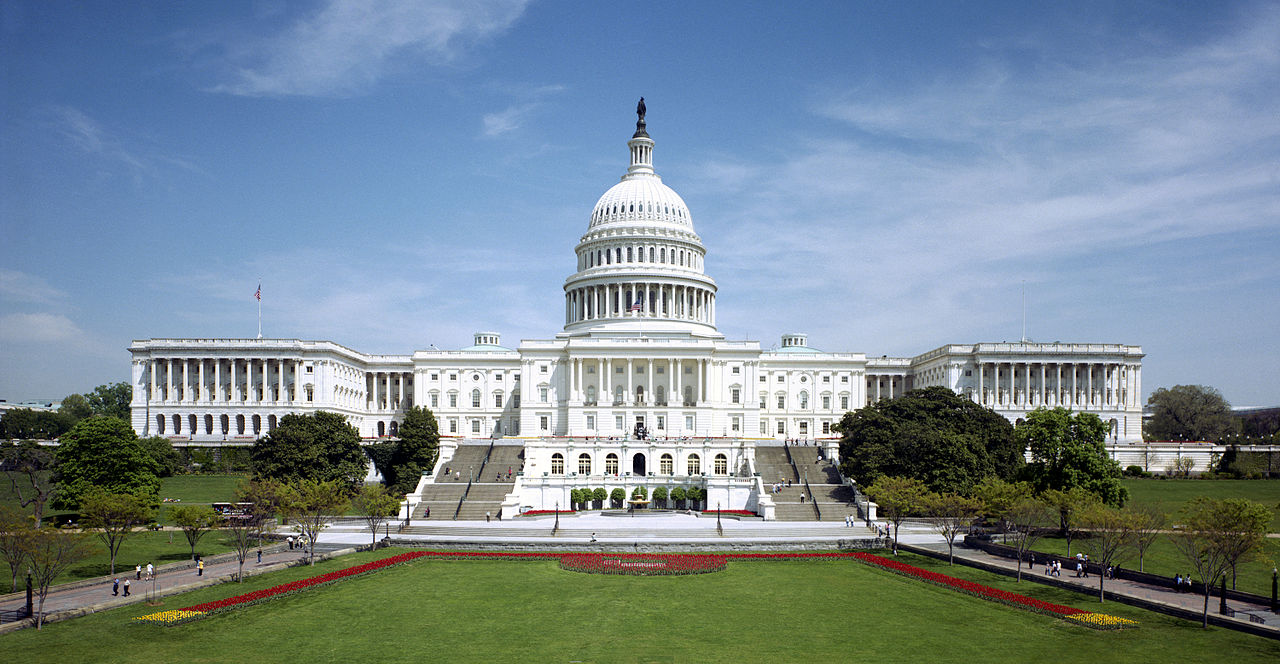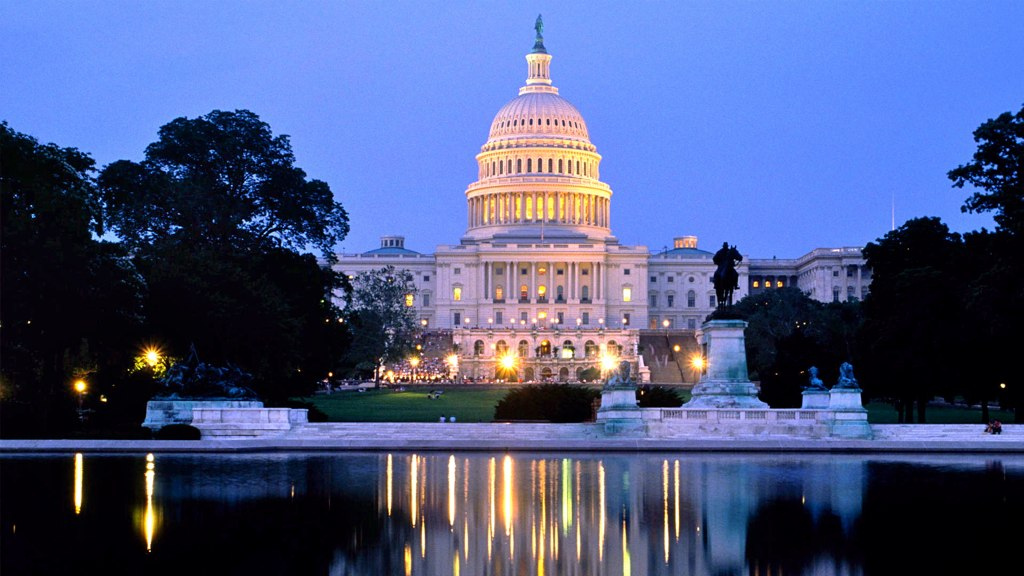The United States Capitol is the seat of the United States Congress, the legislative branch of the U.S. federal government. It sits atop Capitol Hill, at the eastern end of the National Mall in Washington, D.C.. Though not at the geographic center of the Federal District, the Capitol forms the origin point for the District's street-numbering system and the District's four quadrants.
The original building was completed in the year 1800 and was subsequently expanded, particularly with the addition of the massive dome. Like the principal buildings of the executive and judicial branches, the Capitol is built in a distinctive neoclassical style and has a white exterior. Both its east and west elevations are formally referred to as fronts, though only the east front was intended for the reception of visitors and dignitaries.
In 2014, scaffolding was erected around the dome for a restoration project scheduled to be completed by early 2017.
The Capitol's building is marked by its central dome above a rotunda in the central section of the structure (which also includes, the older original smaller center flanked by the two original (designed 1793, occupied 1800) smaller two wings (inner north) and inner south) containing the two original smaller meeting chambers for the Senate and the House of Representatives (between 1800 and late 1850s) and then flanked by two further extended (newer) wings, one also for each chamber of the larger, more populous Congress: the new north wing is the Senate chamber and the new south wing is the House of Representatives chamber. Above these newer chambers are galleries where visitors can watch the Senate and House of Representatives. It is an example of the neoclassical architecture style. The statue on top of the dome is the "Statue of Freedom".
Underground tunnels and a private subway connect the main Capitol building with each of the Congressional office buildings in the surrounding complex. All rooms in the Capitol are designated as either S (for Senate) or H (for House), depending on whether they are north (Senate) or south (House) of the Rotunda. Additionally, all addresses in Washington, D.C. are designated N.E., N.W., S.E., or S.W., in relation to the Rotunda. Since the Capitol Rotunda is not precisely located in the center of the District of Columbia(it is slightly farther east and to the south), the four District quadrants on the old territories of Maryland and Virginia, north and south of the Potomac River are not the same shape and size.
The Capitol has a long history in art of the United States, beginning in 1856 with Italian/Greek American artist Constantino Brumidi and his murals in the hallways of the first floor of the Senate side of the Capitol. The murals, known as the Brumidi Corridors, reflect great moments and people in United States history. Among the original works are those depicting Benjamin Franklin, John Fitch, Robert Fulton, and events such as the Cession of Louisiana. Also decorating the walls are animals, insects and natural flora indigenous to the United States. Brumidi's design left many spaces open so that future events in United States history could be added. Among those added are the Spirit of St. Louis, the Moon landing, and the Space Shuttle Challenger shuttle crew.
Brumidi also worked within the Rotunda. He is responsible for the painting of "The Apotheosis of Washington" beneath the top of the dome, and also the famous "Frieze of American History". "The Apotheosis of Washington" was completed in 11 months and painted by Brumidi while suspended nearly 180 feet (55 m) in the air. It is said to be the first attempt by the United States to deify a founding father. Washington is depicted surrounded by 13 maidens in an inner ring with many Greek and Roman gods and goddesses below him in a second ring. The frieze is located around the inside of the base of the dome and is a chronological, pictorial history of the United States from the landing of Christopher Columbus to the Wright Brothers's flight in Kitty Hawk, North Carolina. The frieze was started in 1878 and was not completed until 1953. The frieze was therefore painted by four different artists: Brumidi, Filippo Costaggini, Charles Ayer Whipple, and Allyn Cox. The final scenes depicted in the fresco had not yet occurred when Brumidi began his "Frieze of the United States History".













